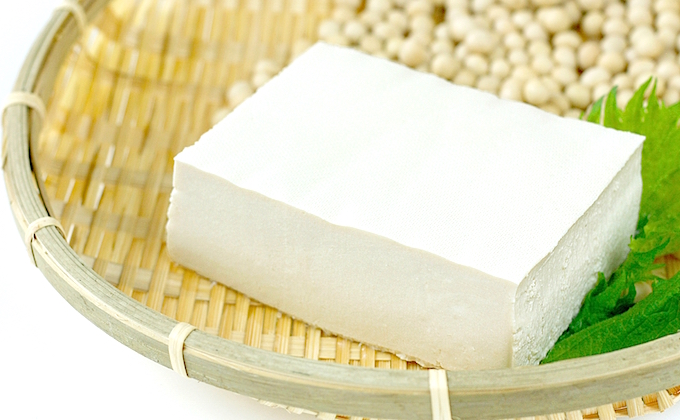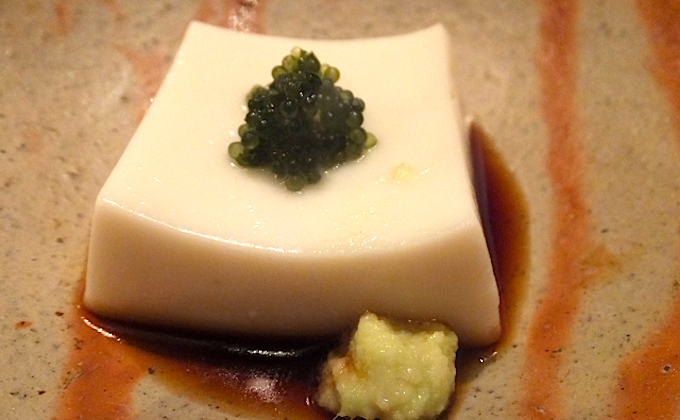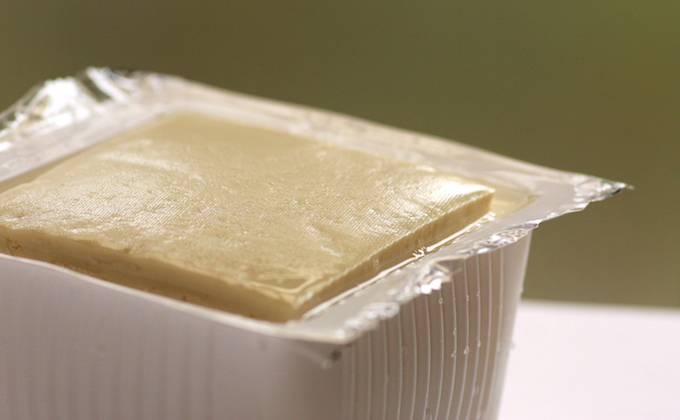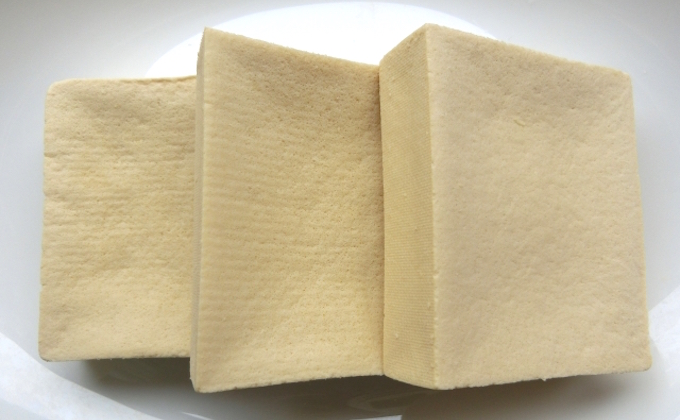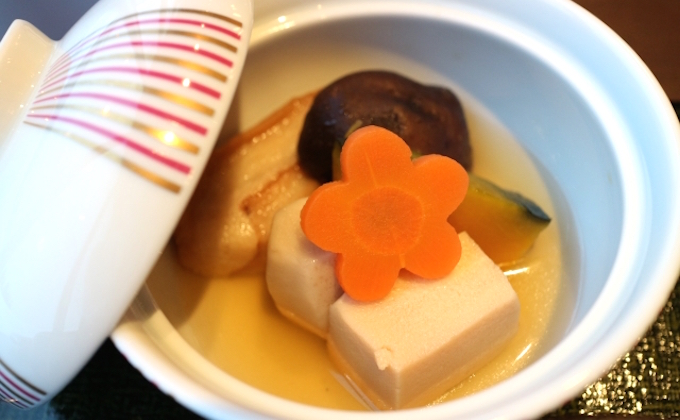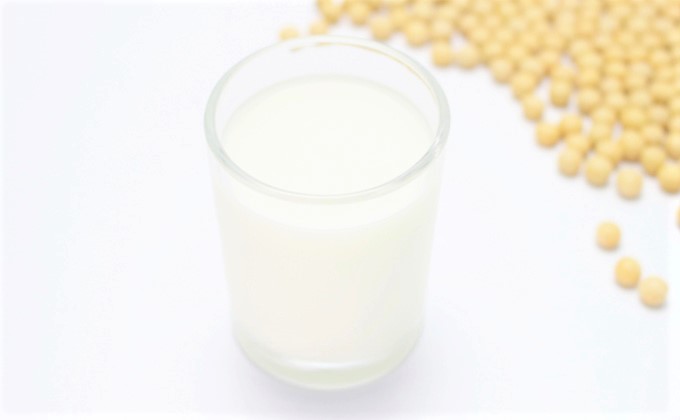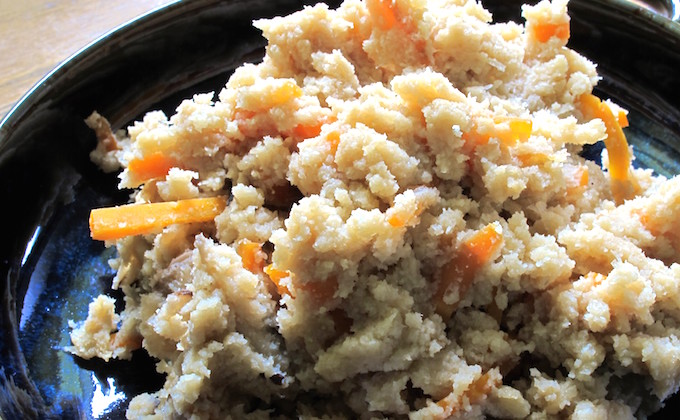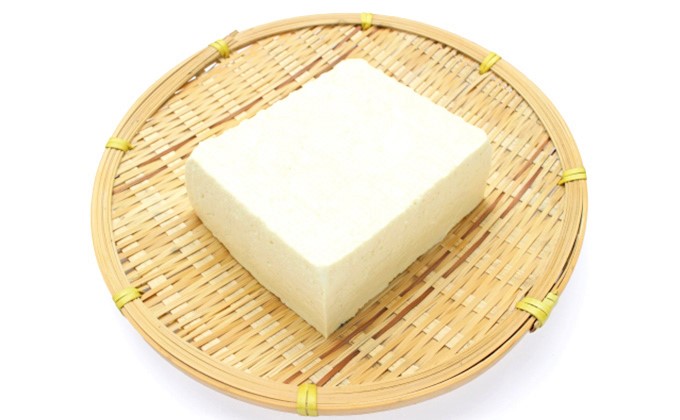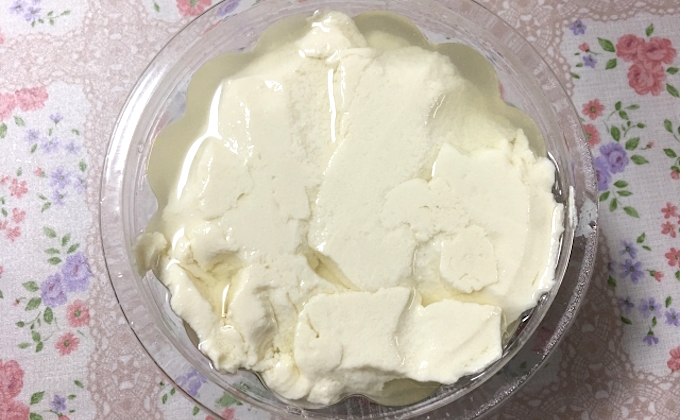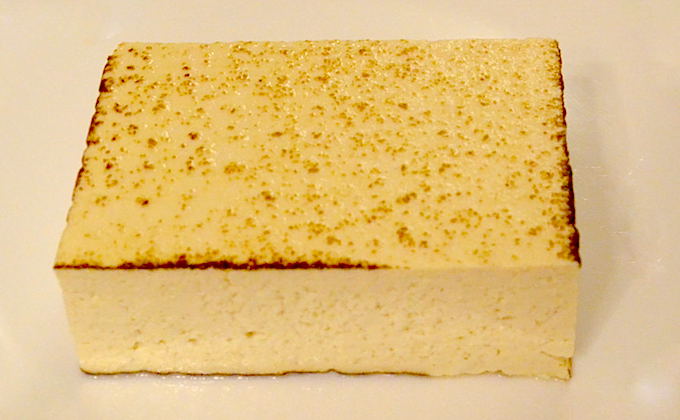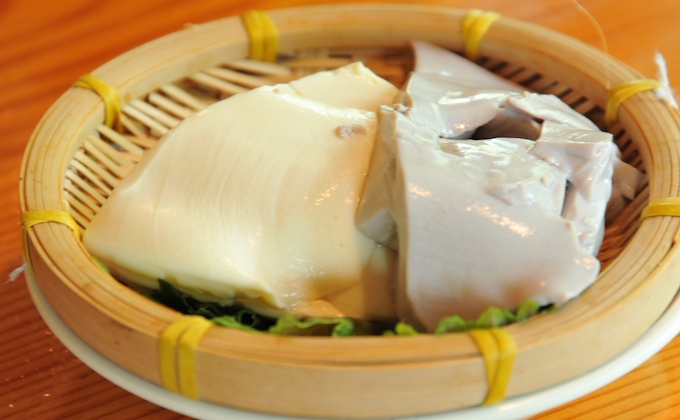TRG Info and Advice
Tofu Bean Curd
The History of Tofu
Tofu originated in China, and has a long history. One theory claims that it was invented approximately 2,000 years ago, by Prince Liu An of Huainan, during the Han Dynasty. Another theory claims, however, that tofu was invented much later. The earliest appearance of the word “tofu” was 1,000 years ago, in the middle of the Tang Dynasty, and there is no known mention of tofu before then.
Tofu is thought to have been introduced to Japan in the Nara Period (710-794), by the Japanese envoy to the Tang Dynasty, but there is no clear evidence. The word “tofu” first appeared in a Japanese document in 1183 at the end of the Heian Period (794-1185), and according to this record, a type of tofu called “shunkin,” was included in the offerings made at Kasuga Shrine in Nara. This is the first mention of tofu in a Japanese document. Tofu was first consumed by Buddhist priests in temples, and then spread to the nobility and samurai households through shojin ryori (the Buddhist vegetarian diet). During the Muromachi Period (1392-1573), tofu started becoming available throughout the country.
It was not until the Edo Period (1603-1867) that tofu began to be consumed in ordinary households. Tofu at that time was an expensive food, and it was served only on festive occasions and events, like Obon (to honor the souls of ancestors), New Year’s Day, funerals and wedding ceremonies. Tofu Hyakuchin, the book of tofu, was published in 1782, and because of its huge success, sequels of the book followed. Cookbooks on konnyaku devil’s tongue, sea bream, and other Japanese specialties, were published shortly after.
What is tofu?
The main ingredient in tofu is soybeans. Tofu is soybean curd made by pressing ground, boiled soybeans, and then adding a coagulant solution such as nigari, which is made from magnesium chloride taken from seawater.
Tofu is a staple consumed widely in Asia, including China (the country of its origin), North Korea, Korea, Taiwan, Vietnam, Cambodia, Thailand, Myanmar, Indonesia, and others, but the production methods vary depending on the country.
Tofu is very simple in appearance and taste, yet extremely versatile, so it can be teamed with various ingredients. It has been highly valued for its health benefits since the old days.
There are several kinds of tofu, such as momen tofu (firm), kinugoshi tofu (silky soft), and yakidofu (lightly browned tofu). Annin tofu (almond jelly), goma dofu (sesame) and tamago dofu (egg) are called tofu, but the ingredients and cooking methods are completely different from tofu.
Keeping tofu fresh
Tofu is usually sold at a reasonable price, but its shelf life is short. Basically, tofu should be consumed by the date indicated on the package, but if it is not used immediately after purchasing, the water should be changed once or twice. Most types of tofu are sold immersed in a package of water, but kept as is, scum starts forming and the water becomes cloudy. As a result, tofu goes bad easily. If cared for properly, however (i.e. removing from the original package, changing the water and refrigerating), it will keep for two to three days.
Once tofu has been boiled, it is sterilized. Therefore, gently wrap tofu with a cloth so that it does not fall apart, and put it into boiling water. When the water comes to a boil again, take the tofu out of the saucepan, and cool it down with cold water. Place the tofu in a container, cover it with plastic wrap and keep it in the refrigerator.
If you would like to keep tofu for a longer period of time, drain the tofu thoroughly, cut it into chunks and freeze them. Frozen tofu will have a spongy texture, however, and the original texture cannot be restored. Although the texture is different, you may enjoy the frozen tofu as a new ingredient. When using frozen tofu, defrost it until it can be cut with a knife. Tofu that has been frozen once is more suitable for miso soup or simmered dishes than for hiyayakko (cold tofu) or yudofu (simmered tofu).
Byproducts of the tofu-making process
Soy Milk
Soy milk is a milky liquid extracted when pressing soybeans to make tofu.
During this process, dietary fiber is left behind in the pulps, (called “okara” in Japanese), but the nutrients in soy milk are almost the same as those found in whole soybeans. Moreover, soy milk is a liquid that can be drunk, so nutrition can be easily consumed.
Soy milk is rich in vitamins, minerals and iron, so it is good for those who are conscious about beauty. Soy milk is also cholesterol-free, so it is good for people at their physical peak, who begin caring about being healthy. It is also rich in lysine and vegetable proteins, considered critical for proper body growth, so it is good for children.
Okara (soy pulps)
The liquid produced by pressing soybeans is soy milk, and the pulps left behind are okara.
Okara is high in protein, lipids and dietary fiber. It is considered a waste-product of tofu and soy milk, so it is sold at reasonable prices in supermarkets and other places
As the demand for okara as a food is well below the supply, and it cannot keep for a long time, it has also been used as a feed for livestock.
The amount of okara that is discarded is increasing recently, so the way to make use of it has become an issue.
Recipe for Homemade Tofu
*Preparation
[Ingredients (for two blocks of tofu)]
Soybeans 300g
Nigari (solidifier) 20cc
Water 16 cups
[Kitchen Tools]
Cooking pot
Strainer
Electric blender
Wooden spatula
Muslin cloth
① Wash soybeans carefully and soak them in water (water to soybean ratio is 3:1) until the soybeans absorb most of the water.
It takes about 8 hours in summer, 15 hours in spring and autumn, and 20 hours in winter.
② Blend soybeans and water together to make a soybean cream.
Try dividing the soybeans into several portions and grinding them up in turn.
③ Place 6 to 7 cups of water in a pot and heat until boiling. Put the soybean purée in the boiling water and simmer it for a while. Continue heating over a strong fire until it comes to a boil, stirring the cream frequently to prevent it from sticking.
Occasionally skim the mixture to keep it clear of foam.
④ Heat until water comes to a full boil, but turn off the fire just before it boils over.
Place the pot over heat again and bring it back to a gentle simmer. Stir the purée frequently, to prevent sticking, over low heat for about 8 minutes.
The beany odor vanishes and the aroma of tofu appears in its place.
⑤ Set a strainer in a bowl, line the strainer with a muslin cloth, and pour the hot liquid into it. Gather up the corners and sides of the cloth, and squeeze out the liquid (Be careful! The liquid inside the cloth will be hot).
The liquid is soy milk, and the pulps left in the cloth, okara.
⑥ Heat the soy milk up to 70-75℃, and stir in the nigari (when adding nigari, add it little by little, using the spatula to help guide it).
Stir it gently, then cover the pot with a lid and leave it until it becomes firm, about 10 minutes.
⑦ When all the soy milk has curdled (it separates into a white curd and a clear yellow liquid), ladle the curds into a muslin cloth in a flat basket or mold, and put a weight on top. Let set for 15 minutes. Transfer the tofu from the basket or mold into fresh water, and your tofu is ready.
Tofu Varieties
Momen Tofu (literally: cotton tofu, firm tofu)
The name is derived from the cotton cloth used when pressing the curdled soy milk with a coagulant solution. The texture is a little bit coarse, and the pattern of the cloth is lightly imprinted on its surface. The excess liquid is pressed out in the production process, so it has low water content. When pressing out excess water, nutrients become compressed, and compared to silken kinugoshi tofu, momen is rich in protein, lipids, calcium, iron, vitamin E and dietary fiber. However, vitamins B1 and B2, and kalium flow out with the excess water.
Kinugoshi Tofu (silken tofu)
Kinugoshi tofu began being called kinugoshi because the texture is soft and smooth, like silk, compared to momen tofu. Contrary to popular believe, it is not filtered through silk cloth. Unlike momen tofu, kinugoshi tofu is made by pouring the hot mixture of soy milk and coagulant straight into a mold, without pressing it. Therefore, it has high water content. It contains more vitamins B1 and B2, and kalium, than momen tofu.
Yose Dofu
Yose dofu is made by scooping out hot soy milk curdled with coagulant and placing it in a bag or container. As it is neither pressed nor immersed in water, it has a unique texture and flavor, different from momen tofu. Yose tofu is alternatively called oboro tofu. Oboro is the name for a moon half hidden in clouds, and one theory claims that oboro tofu is so named because it resembles a hazy moon.
Yaki dofu (Grilled momen tofu)
Yaki dofu is tofu without excess water that is grilled and browned on both sides directly over a flame. It soaks up flavors well and holds its shape, so yaki dofu is valued in hot pot dishes such as sukiyaki.
Zaru Tofu (literally: basket tofu)
Zaru tofu is made by placing soy milk that is set with coagulant solution in a basket. The process is almost the same as yose dofu (oboro tofu), but zaru dofu is dehydrated once after being placed in a basket.
Soft Tofu
Soft tofu is made by first blending a coagulating agent with soy milk. This mixture is then poured into a mold without breaking up the set soy milk. It is not pressed strongly and excess oil is not removed very much. The texture is somewhere between momen tofu and kinugoshi tofu, but it is as firm as momen tofu.
Packaged Silken Tofu (Juten tofu)
This tofu has as smooth a texture as kinugoshi tofu. Soy milk is cooled once, then poured directly into a package with solidifier, and vacuum-sealed. It is put, whole, in hot water at 80-90℃ and left for 40-60 minutes to curdle. The soy milk is sterilized through this process, so juten tofu is hygienic and tends to keep longer than other types of tofu. Juten tofu is not sold immersed in water, because the package is vacuum-sealed immediately after pouring in the soy milk.






